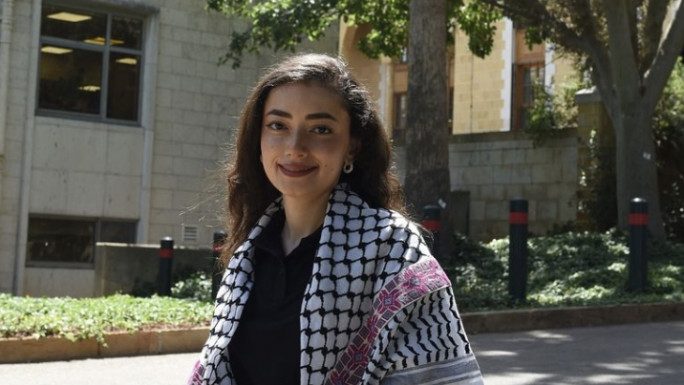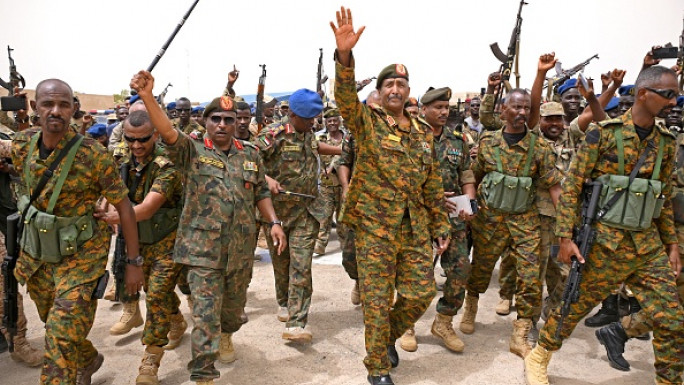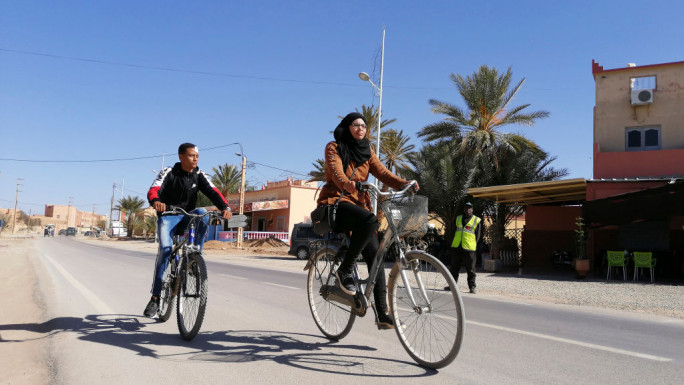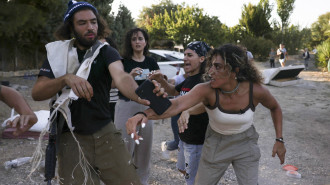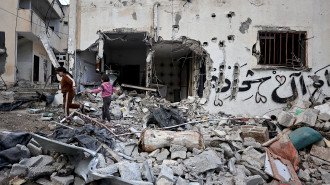
The battle to document Israeli settler violence in Masafer Yatta

Alaa Hathleen, a 25-year-old resident of the occupied West Bank, has lived all of his life in the village of Umm el Khair in Masafer Yatta, just metres from an Israeli settlement.
Growing up in a Palestinian community that was denied everything, from an early age he saw how “settlers have it all, every day”.
“Our village witnesses assaults and violations by settlers on a daily basis and grapples with the absence of all essentials, like water and electricity. And literally just meters away, settlers live in refurbished homes, fitted with water and electricity, and enjoy freedom of movement,” the young man, who works as a natural healer by profession, tells The New Arab.
The 25 villages that make up Masafer Yatta, a Bedouin community just outside of Hebron, have been on the receiving end of settler violence since at least the 1980s. That’s when an Israeli court declared its pastoral lands uninhabited and designated them a firing zone for military drills.
In May 2020, another Israeli court doubled down on the decision and effectively ordered the community to evacuate. Owing to the drills, residents describe bullets whizzing through their tents, landmines planted in their soil, and tanks encircling their homes.
For Hathleen and his cohort of young online content creators, there’s not much they can do but document the unfolding tragedy as best they can, and they say they’ve paid a hefty price for it.
Since 7 October, several youth-led groups have made this their mission, risking their lives to bring international attention - and eventually sanctions, they hope - against those trying to violently displace them.
Their efforts come amidst pro-Palestinian online content facing censorship, Israel's targeting of journalists on the ground, as well as laws imposed to block outlets from providing coverage of violations committed against Palestinians.
"I don’t just take pictures or document what’s happening to show who is right and who is wrong. I’m documenting crimes and a lack of mercy from an occupation that doesn’t understand human rights and doesn’t see Palestinians as human beings,” said Hathleen.
Even as Israeli settlements have sprung up all around them, Hathleen’s semi-nomadic community is barred from doing construction on their own land. Those whose homes have been demolished live in shabby tents or dark, cramped caves. Most eke out a modest living on agriculture and animal husbandry, all while fending off marauding settlers who periodically steal their crops and livestock.
The situation took a bloodier turn after 7 October, residents say. That’s when settlers backed by the Israeli army began more aggressively bulldozing homes, setting swaths of farmland ablaze and, in some cases, murdering those who stood in their way.
Essential infrastructure has not been spared: four schools were reduced to rubble along with a makeshift medical centre, according to Hathleen.
After 7 October, National Security Minister Itamar Ben Gvir distributed semi-automatic rifles and other weapons to civilians, a move seen as pouring fuel on the fire and greenlighting settler assaults. Hathleen felt even more compelled to document the atrocities.
But his online posts have drawn serious threats. When an army officer saw Hathleen posting on social media, he threatened to “cut off his tongue”. Another time, when he posted a settler confiscating a donkey, he was told that he would be “killed or else end up like the donkey” if he did it again.
Hathleen says his family is even targeted because of his activism. Last November, his brother was beaten into a coma by settlers after they found pictures of Gazan children on his phone.
|
|
Youth of Sumud
Mohamed Hourini, 25, is part of a group called the Youth of Sumud. They describe themselves as a group of Palestinians in south Hebron who are “committed to a peaceful popular resistance as a strategic choice to end the Israeli occupation”. On Facebook they post photos of Israeli settlers and soldiers teaming up to demolish wells and raze homes.
The group carefully documents settler violations, taking down testimony with notes, videos, and photos before uploading the content to social media or shipping it off to rights groups and media organisations.
After settlers ransack caves occupied by bedouins, they rush in to repair them. To be proactive they organise demonstrations and sit-ins in areas vulnerable to settler attacks.
“Israeli Occupation Forces are raiding the village of Jawaya with bulldozers, how many Palestinians will be displaced,” said a recent post. Another photo shows fields of olive and fig trees set ablaze.
Hourini’s work has come at a hefty price. “Because of my presence on social media and my documentation of the events happening in Masafer Yatta, I was arrested 11 times and subjected to beatings, torture, and interrogation,” said Hourini.
In some cases, Hourini’s documentation has paid off. Recently Hourini’s father, also an activist, was accused of attacking a settler. The accusation was dropped however after Hourini captured the attack on camera, proving it was self-defence.
Other groups, like B’Tselem, have meticulously catalogued settler violence, even building a searchable database of violent incidents.
But even the best documentation can only do so much. The online activists say their work must lead to sanctions on settlers. So far Washington has imposed limited sanctions on Israeli settlers committing violence in the West Bank, but the relatively minor punishments have done little to deter their onslaught.
Local journalists have also played a critical role in documenting the displacement. That’s despite Palestine being the “world’s most dangerous country” for journalists, according to Reporters Without Borders, which has filed multiple complaints with the International Criminal Court accusing Israel of committing war crimes against journalists.
In the West Bank, 76 Palestinian journalists have been arrested, and some 50 are still languishing behind bars according to the latest tally by the Palestinian Journalists’ Syndicate (PJS). That’s in addition to the over 100 that have been killed in Gaza.
Among the many Palestinian journalists documenting settler violence is Omid Shihada, a 37-year-old correspondent for Al-Araby TV in the West Bank.
Shihada says he’s been struck by the obsession of settlers to burn down everything in their path. He describes settlers organising large-scale attacks at night, carrying flammable materials in their pockets to set ablaze whatever they encounter.
“They burn homes with people inside. They burn agricultural crops. They burn vehicles,” says Shihada.
Still, Shihada said the effort to archive what’s happening must continue.
“I won’t give up,” said Shihada. “We are the generation that will change the mindset of our local community first and then the international community."
This article is published in collaboration with Egab.

![Palestine sat next to member states at the United Nations General Assembly on Tuesday [GETTY]](/sites/default/files/styles/image_684x385/public/1441455581.jpeg?h=199d8c1f&itok=CgJaFY6v)
